| 1 | US kingsnakes (Lampropeltis) |
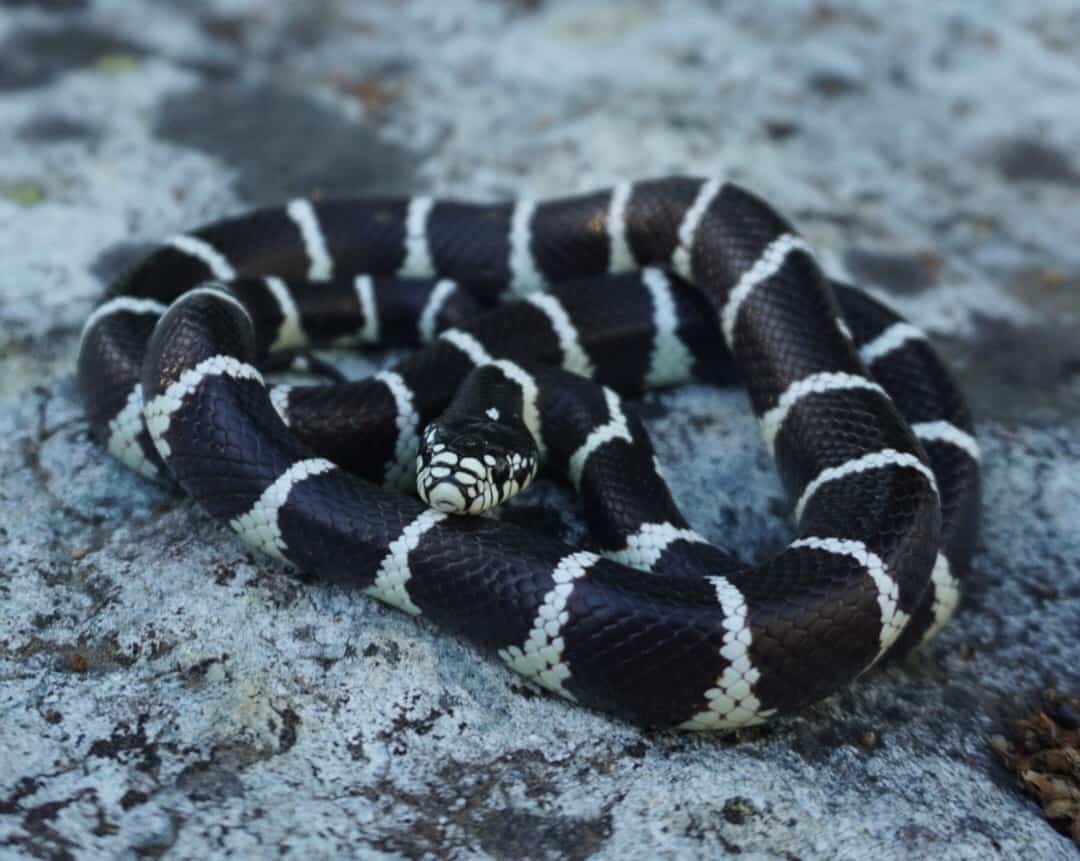
Out of all snakes on Earth, at least ones that survive to the present day, none has such powerful constricting force per body mass as the kingsnake (Lampropeltis) family. We’re not talking about all snakes excluding boas or pythons, but snakes overall.
Kingsnakes range from Ontario to Ecuador, and are unbeatable for their constricting force. While boa constrictors exert a higher force overall, as measured by pounds per square inch (PSI), Lampropeltis members are stronger as a proportion of body weight. They make superior use of their muscular structures, and deliver an extremely tight formation of coils, like a metal spring, designed to maximise the force. In a study comparing 3 kingsnakes to 3 US ratsnakes, all three kingsnakes defeated the larger ratsnakes. Specifically, the California kingsnake (L. californiae) was the most powerful of all, and therefore the most powerful constrictor in proportion to body weight of any snake worldwide.
Kingsnakes have a flexible diet. For example, the California kingsnake preys on mammals (29% of meals), snakes (29%), lizards (25%) and birds (11%). This constricting force is rarely used against humans. If you see a California kingsnake slithering past your picnic bench, with its recognisable white-black patterns, there’s no need for fear, or even to move a muscle, except to snap a photo.
| 2 | Glossy snake (Arizona elegans) |
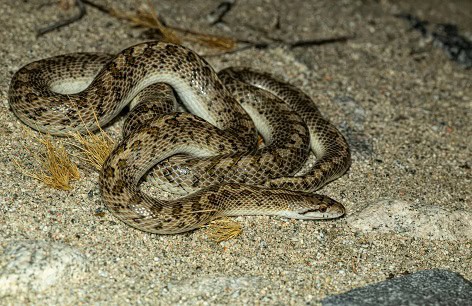
A snake found in dry areas of southwestern US states such as New Mexico, California and Arizona. Glossy snakes (Arizona elegans) are most common on arid desert flats with bushes and dry grasslands. They have a shorter lower jaw, which prevents sand from entering their mouth while burrowing in the desert. This is a docile snake which shows no aggression towards humans.
As for their diet, they lack any venom, and resort to crushing constriction instead, with which they can exert decent power, given that they reach a maximum length of 178cm. Glossy snakes prey on a mixture of reptiles and mammals, accounting for about 50% of meals each. Confirmed prey include desert iguanas, western whiptails, Merriam’s kangaroo rats and eastern moles.
Arizona elegans is never found in bustling towns or cities, but is a widespread snake which plunges deep into Mexico, to just a few hundreds miles north of Mexico City. Without their crushing constriction skills, they probably wouldn’t have survived for so long, or spread so far. This is a nocturnal species which hides in burrows during daylight, which they’ve sometimes enlarged themselves.
| 3 | Chinese garter snake |
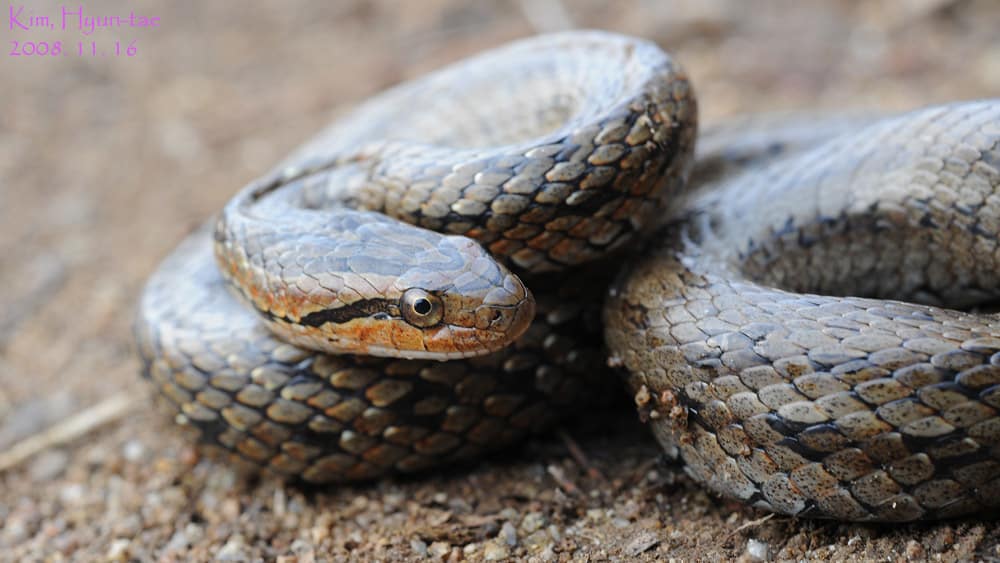
An oddball species found mainly in China, southeast Russia, and the Korean peninsula. It’s an oddball because it’s the sole member of its Oocatochus family, and it’s the only ratsnake species worldwide to give birth to live young rather than laying eggs.
Chinese garter snakes mainly appear in streams and rivers in the countryside, away from towns. They can be extremely common in local spots, with 1 appearing every 10 metres along Russian lake shores. Luckily though, there’s no chance of them swarming you and each delivering 100mg of venom at once. Chinese garter snakes don’t have any venom, instead focussing on constriction, which they apply to their mainly amphibian prey.
Oocatochus rufodorsatus preys on the likes of black spotted frogs (Pelophylax nigromaculatus), Japanese tree frogs, Asian grass frogs, common tree frogs, and occasionally reptiles like mountain grass lizards. The Chinese garter snake‘s main weakness is pollution. As industrial sludge spills into their lagoons and rivers, they tend to vanish without a trace. This species reaches a maximum of 150cm, so although they cannot kill a human being, it might be shocking if they suddenly activate and coil around your limbs tightly in the blink of an eye.
| 4 | US ratsnakes (Pantherophis) |
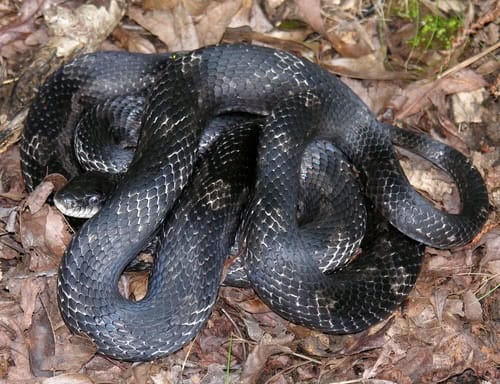
The USA has 3 main ratsnake species (Pantherophis family), all of which are constrictors, and have a tendency to slither up tree trunks and raid birds’ nests. Black ratsnakes are found in easterly states like Florida, western ratsnakes to the west of the Mississippi river, and grey ratsnakes inbetween. All 3 are capable of exceeding 2 metres, and move mainly during the day.
Even though American ratsnakes are defeated by kingsnakes for constricting force, their squeezing powers aren’t to be underestimated. Black ratsnakes for example, are capable of choking out bird predators who swoop in with overconfidence.
Scientists were exploring a forest access road in South Carolina when they stumbled across a black ratsnake and a red-tailed hawk locked in an embrace. Both had already suffered wounds in this titanic duel – the snake had talon puncture marks, while the bird was already suffocating in coils around its neck. As the struggle went on, it was the black ratsnake which emerged victorious. The bird was choked so hard that its tongue protruded from its beak, it sank to the ground, and finally died. Relentlessness is a characteristic of the US ratsnakes, as this snake continued to squeeze for 10 minutes after the hawk died.
Black ratsnakes probably aren’t strong enough to kill a human, but a bird’s neck is hardly a twig. You might still need a friend to dash over and free you from the ratsnake’s determined grip.
| 5 | Clelia clelia (mussurana) |
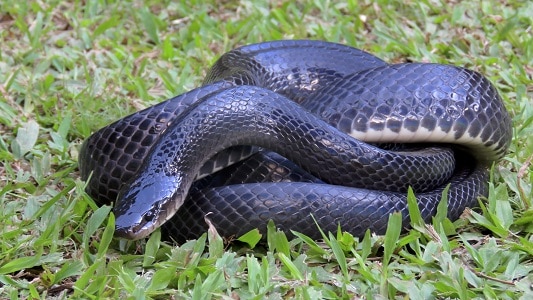
Clelia clelia, AKA the mussurana, has one of the most crushing constricting grips of any central American snake. It has a thick body to match, and a length of up to 275cm. However, brute squeezing force isn’t the mussurana’s only power. Clelia clelia’s constriction skills are aimed at fellow snakes, and in particular, venomous pitvipers, including the likes of the fer-de-lance, which is such an unpredictable snake that local coffee farmers spend their entire lives dreading to meet them.
Fer-de-lances cause hundreds of deaths per year, but Clelia clelia has full immunity to their venom. They’ve been observed with venomous pitvipers within their constricting grip, which are actually biting their captor snake repeatedly, but to no effect whatsoever. After asphyxiating and swallowing their pitviper prey, the Clelia clelia slithers off as though nothing happened. It’s not like they have a thick rhinoceros hide – the venom is flowing through their bloodstream – but they have genetic coding for detoxifying enzymes which make the venom useless (the exact mechanisms aren’t fully researched).
Clelia clelia is no threat to human beings, although locals may fear them unnecessarily. A tight grip could cause severe pain to your arm, but not by enough to trigger a blood clot or heart attack. This species is most likely to appear on cloudy days following heavy rainfall. Costa Rica, Panama and Colombia are some of its hotspots.
| 6 | Pipe snakes (Asia) |
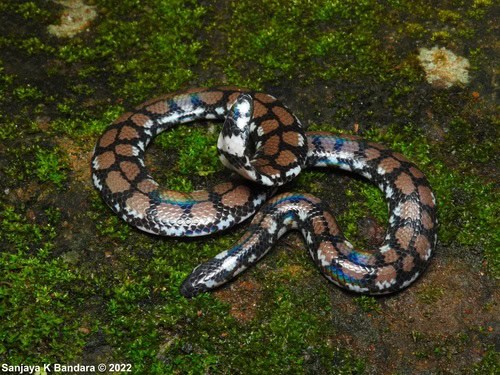
The Cylindrophis group is collectively called the pipe snakes and has 14 members in southeast Asia and the Indian subcontinent. None are venomous, as they’ve chosen to walk (or slither) down the constriction route instead. The image above is the Sri Lankan pipe snake, AKA Cylindrophis maculatus, which is found exclusively in Sri Lanka, in densely forested areas below 1000 metres in altitude.
Despite being small, Cylindrophis maculatus usually preys on fellow snakes, including tiny burrowers like Schneider’s earth snakes and Gunther’s rough sided snakes. They begin by delivering a savage bite to their prey’s head, and maintaining a tight, unrelinquishing grip. It’s only once this grip is established that they apply tight, constricting coils.
Now rest assured, if you’re exploring a Sri Lankan rainforest trail with your friends, and you step a few metres off the path to go to the toilet while they walk ahead, you’re perfectly safe. You won’t be suddenly enveloped by slimy, chocolatey white coils, as this snake measures just 35cm maximum, and has no chance of killing a human being. The best they might accomplish is a painful squeeze of your arm, though even then, they’re fairly docile around humans and can be picked up perfectly safely.
As a family, Cylindrophis is fairly sluggish and slow-moving, and easy to catch. Though small, their thickness makes them appear larger.
| 7 | Cape house snake (S. Africa) |
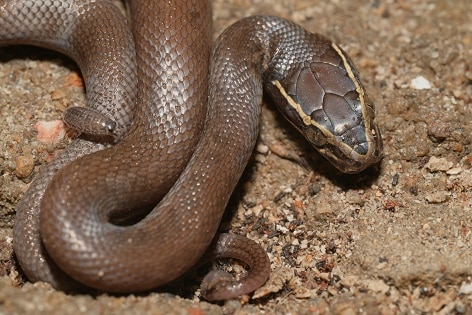
The Boaedon house snakes are one of the largest snake clans that few westerners have ever heard of. There’s 22 members in Africa, which reach as far north as Morocco, and absolutely swarm the south.
Cape house snakes are one of the most abundant in South Africa, as they appear in parks, back gardens, woodlands, fields and savannah alike. They have no venom whatsoever, but they’re an incredibly hardy and flexible snake. The only thing they really fear is a human boot accidentally stepping down on them from above.
Cape house snakes have an extremely flexible diet too. They can eat hairy-footed gerbils, tropical house geckos, house sparrows, and amphibians like Cape river frogs all the same. All these prey except the smallest are killed using constriction, by a couple of expertly applied coils, which simultaneously prevent the escape of the prey, and cut off the oxygen supply to its brain via asphyxiation. Cape house snakes have a large discrepancy in size, as females can reach 120cm, while males rarely reach 80cm.
| 8 | Pine snake (USA) |
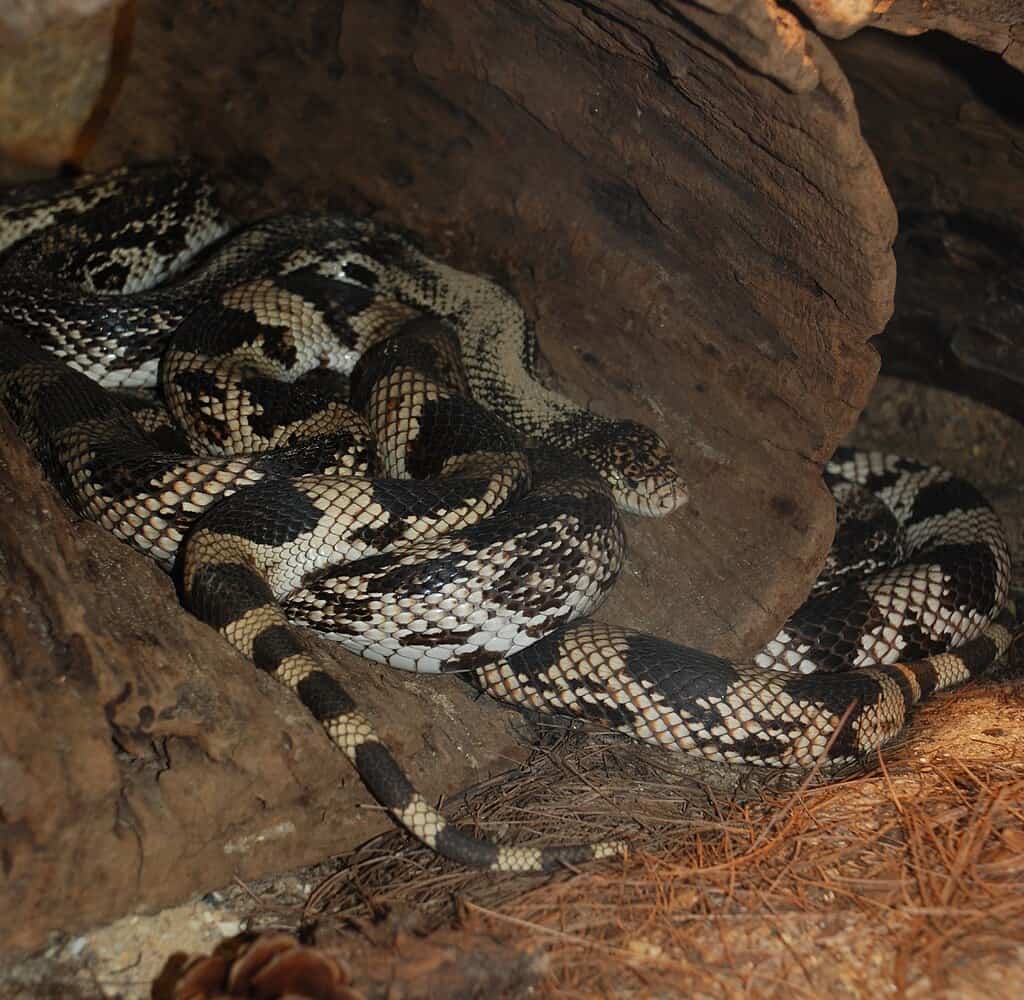
The pine snake is one the USA’s longest, reaching a record of 228.6cm. They’re the largest burrowing snake in the USA, as their ability to construct tunnels measuring as deep as 6 metres is virtually unrivalled, as evidenced by the modified scales on their snout.
Pine snakes have two of three important snake abilities. Firstly, they lack any venom, even a mildly venomous saliva. Secondly, they’re powerful, crushing constrictors, and thirdly, they possess viciously sharp fangs which they know exactly how to use. Pine snakes have a flexible diet, including mammals, reptiles and birds. Most are constricted in an inescapable jail of coils, but the smallest are swallowed alive.
Like gopher snakes though, pine snakes have a tendency to invade underground burrows to seek out sleeping rodent families. In these confined spaces, they’re unable to rearrange themselves properly, so instead of constricting, they slam a mouse to a tunnel wall and pin them there instead.
The only hope of the rodent is to dodge before this sudden coil slam arrives. Pine snakes get their comeuppance in the form of numerous above ground predators, including American red foxes and striped skunks. It’s likely that they coil around these hungry creatures in an attempt at self defence.
| 9 | Amazon pipe snake |
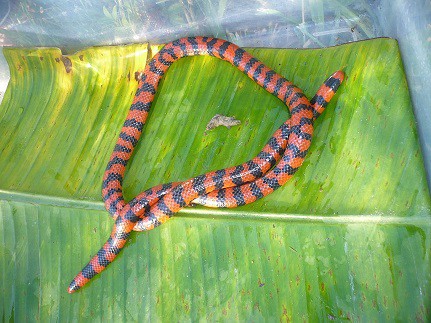
The Amazon pipe snake, AKA Anilius scytale, is a common species across South America, which is the only member of its Anilius family, but is found from Brazil to Suriname to Ecuador. It measures 70cm, and lacks any venom, preferring to crush its reptile and amphibian prey to death using constriction instead. It resides on rainforest floors, and preys on creatures like black-headed snakes, Bahia slow worms, and caecilians (legless amphibians).
There’s a very good reason why this snake is a constrictor: it’s one of the most primitive physically. From a distance, it looks like the advanced, highly evolved coral snake clan, with its snazzy and sleek colours. Yet Anilius scytale shares physical features with snakes that existed during the time of the dinosaurs, weaving beneath the legs of stegosaurs, and hiding eggs in places safe from velociraptors. Its skeletal structure has the vestigial remains of hind legs, a feature also found in pythons, but missing in “advanced” snakes. It also lacks jaws which can fully unhinge, making it a halfway house between modern snakes and ancient lizards.
Constriction is just another remnant feature, as this was believed to be the hunting speciality of the oldest snakes, including dino-era species, appearing way before the arrival of venom, which actually spawned from modifications to saliva enzymes found in all animals. This includes human saliva, as we too possess amylase in our saliva, required to break down carbohydrates. Modifications in the earliest venomous snakes made these ingredients all the more corrosive, but this happened far later than a simple squeeze and crush tactic.
| 10 | Sunbeam snake (southeast Asia) |
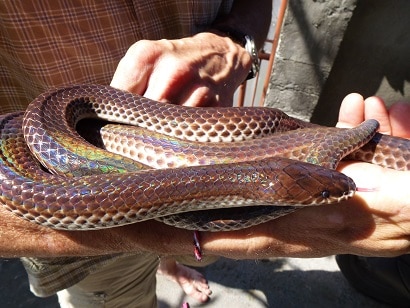
The most fantastically iridescent snake on Earth. Many species worldwide reflect the shades of the rainbow when exposed to light (see here), but none quite like the sunbeam snake. This species averages at 1 metre and can reach 1.25 metres, and occurs in Thailand, Vietnam, Cambodia, Malaysia, Indonesia and more. They lack venom and put most of their hunting energies into constriction instead.
To human beings, this is one of the coolest snakes to pick up and hold. They’re perfectly docile and rarely attempt to bite, and you can witness their shimmering iridescent colours up close. Top places to find them include the edges of rice fields just after a heavy downpour. To their prey though, they’re a living nightmare. A giant serpent which wraps them up all while flashing blinding shades of red, blue, and lilac. There’s no escape from its jail of coils, except not to get caught at all. Prey of the sunbeam snake include banded bullfrogs, rainbow mud snakes, striped kukri snakes, and Linnaeus’ writhing skinks.
This species isn’t the thickest ever, but it’s easily a powerful enough hunter to cover thousands of square miles of territory in southeast Asia. It lives alongside king cobras and neurotoxic kraits while carving out a respectable existence as a simple crusher, although it does feature on the king cobra’s menu regularly.
